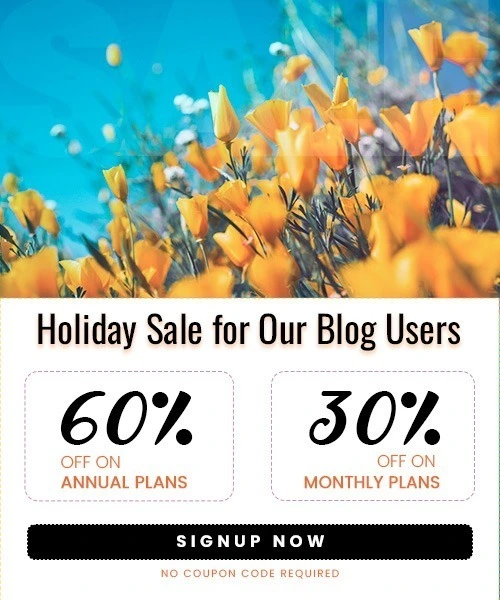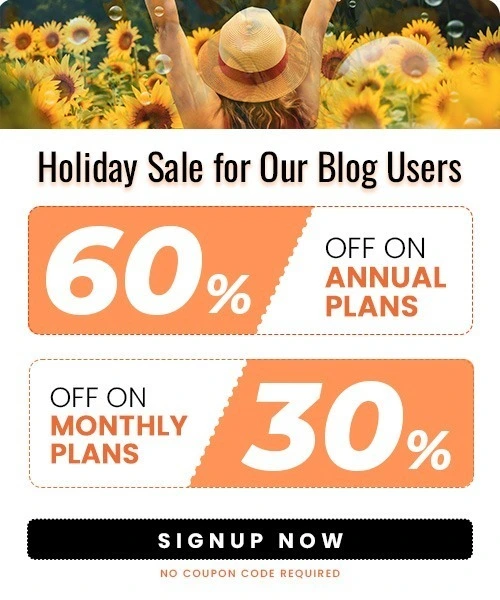How to Set Up a Facebook Shop in 2025?
Last Updated on May 2, 2025 by Himanshu Rawat
Facebook isn’t just a spot to reconnect with friends or post funny memes, it’s also a robust e-commerce platform. To setup Facebook Shop, you’re opening a direct line to millions of potential customers for your business.
Whether you’re running a small venture or a well-known brand, Facebook Shops let you display your products, handle orders, and engage with your audience, all without them needing to leave the app.
Why You Should Set Up a Facebook Shop?
1. Massive Audience
Access to over 3.065 billion monthly active users, expanding your reach and increasing brand visibility.
2. Free and Easy to Use
One of the biggest perks of a Facebook Shop is that it’s free and easy to set up no tech skills or upfront costs needed. With a user-friendly interface and guided setup, anyone can start selling quickly.
This smooth, user-friendly journey helps drive more sales.
3. Built for Mobile Shoppers
The platform is designed for mobile users, making it easy to engage with the growing number of consumers who shop via smartphones.
According to the 2025 Global Digital Shopping Index, 48% of consumers used a mobile phone for their most recent retail purchase. Interestingly, nearly a quarter of those mobile shoppers used their device while shopping in-store to assist with their purchase.
4. Powerful Marketing Tools & Insights
Facebook’s advanced advertising tools, such as Meta Ads Manager and powerful recommendation algorithms, enable you to connect with the right audience while offering valuable insights to refine your marketing strategy.
Note: Learn how to grow faster with our full Facebook SEO guide.
Why? Helps readers understand organic reach and post optimization once the shop is live.
5. Engaging Social Commerce Features
Encourage interaction and build trust with your audience through product likes, comments, shares, and live shopping events, turning your shop into a vibrant social hub.
Requirements of setting the Facebook shop
Before you can launch your Facebook Shop, you need to meet several requirements, here’s what you need:
- Facebook Business Page: You must have an active Facebook Business Page. If you don’t have one, you’ll need to create it.
- Compliance with Facebook’s Commerce Policies: Your business and products must follow Facebook’s Commerce Policies, which include rules about what can’t be sold and guidelines for respecting intellectual property rights.
- Business Information: You’ll be required to share key business information, such as your business type, tax ID numbers (if applicable), and contact details for a designated representative.
- Linked Bank Account: For payment processing, you must link a valid bank account.
- Product Catalog: Create a product catalog that includes clear, high-quality images, detailed descriptions, pricing, and up-to-date inventory information.
- Meta Business Manager Account: You need a Meta Business Manager account to manage your shop and advertising.
- Shipping and Payment Setup: Set up your shipping preferences and choose your preferred payment providers, like PayPal or Stripe, to handle customer transactions smoothly.
How to set up a Facebook shop (Step-by-Step)?
If you’re wondering how to setup Facebook Shop quickly, follow these simple steps:
Tip: Before diving in, Check out our Facebook algorithm guide to understand how content visibility works—especially useful once your shop is live!
1. Go to the Get Started page

Visit the Get Started page on Facebook or Instagram.
Click Get Started, then select Create a Shop, and click Get Started again.
2. Choose where you sell

If you’re already using Shopify or another partner website, select it to connect your shop.
If not, choose “I don’t use these platforms” and click Next to continue using Facebook’s Commerce Manager.
3. Select your country

Choose the country where your business is based. This helps Facebook show the right settings for things like currency, checkout, and shipping.
4. Choose your sales channels
Pick where you want to sell:
- Facebook Page
- Instagram business account
You can choose one or both, or create new ones if needed. Then, click Next.
5. Set delivery and return info

Add your shipping and return policies. This tells customers how they’ll get their orders and what to do if they want to return something.
6. Preview your shop
Take a final look at your shop setup.
Check that all the info is correct, agree to Facebook’s Seller Agreement, and click Finish setup.
A quick note about catalogs:
When you set up your shop, you’ll need a product catalog to store and manage your items. If you don’t have one, Facebook will create it for you automatically.
Once your shop is live, you can:
- Add products
- Customize your shop with your brand
- Create collections to organize products
When you’re ready, publish your shop—Facebook will review and approve it before it goes live.
What are the fees for the Facebook shop?
Here I have broken down the fee structure for Facebook Shop that you need to know, along with an example of Shopy merchants.
- Local Pickup: No fees are charged for items sold via local pickup or drop-off.
- Shipped Orders: For items sold with shipping, Facebook charges a 10% selling fee or a minimum of $0.80 per listing, plus a 2.9% payment processing fee. Shopify merchants are exempt from the 2.9% processing fee.
- Listing Fees: There are no fees to list items for sale
| Transaction Type | Fee Structure |
|---|---|
| Local Pickup | No selling fees |
| Shipped Orders | 10% of sale price (min. $0.80) + 2.9% processing fee |
| Shopify Merchants | 10% of sale price (min. $0.80); no processing fee |
How to market your Facebook shop?
From running Facebook Ads to hosting live shopping events, there are several ways to boost traffic after you setup Facebook Shop. Some effective marketing strategies include:
1. Use Facebook Ads
- Run dynamic product ads that automatically show relevant products to users based on their interests and behavior.
Example: Allbirds
Allbirds used Facebook Dynamic Ads to retarget users who clicked “Shop Now” but didn’t buy. By testing different creatives highlighting product benefits and design, they boosted purchases by 48%.
- Use retargeting ads to bring back visitors who viewed your products but didn’t purchase.
Example: Eurail

The European rail pass company created animated video ads to retarget users who had previously visited their website. These ads led to a 3.2x increase in landing page views and a 7.7x increase in link clicks, with a 78% lower cost per click compared to previous campaigns.
- Take advantage of lookalike audiences to find new customers similar to your existing ones.
Example: E-Commerce Fashion Brand
Uploaded their customer email list to Facebook to create a Lookalike Audience. Facebook identified users with similar interests, browsing behavior, and purchase history.
The Lookalike Audience outperformed other targeting options, resulting in a 30% increase in conversions and a 20% decrease in cost per acquisition compared to previous campaigns.
2. Promote on Instagram
- Tag products in your posts and stories to allow users to shop directly.
- Use Instagram Reels and Stories to showcase products in action.
- Partner with influencers to expand reach and build trust.
3. Go Live
- Host Facebook Live Shopping events to demonstrate products and engage viewers in real-time.
- Answer questions, showcase features, and offer exclusive live-only deals.
Example: A comedian and actress with over 15 million Facebook followers, Laura Clery has hosted live shopping events promoting various products, including mobile games and her brand, Boibs, which makes them earn more engagement.
4. Engage Your Community
- Stay active by posting regularly on your page.
- Respond to comments and messages promptly to build trust and relationships.
- Use polls, questions, or contests to increase engagement.
5. Email Marketing
- Send newsletters with product highlights or updates.
- Link directly to your Facebook Shop or specific collections.
- Offer exclusive discounts to subscribers.
Case study: Glossier & Emily Weiss
One standout example of influencer-driven email marketing is Glossier’s strategy, led by founder Emily Weiss. Her brand and influence helped build trust, driving strong engagement and sales through authentic, community-focused email campaigns.
6. Offer Promotions
- Run limited-time discounts to create urgency.
- Create bundle deals to increase average order value.
- Try flash sales to spike interest and conversions.
Example: Nykaa Beauty
Nykaa, a leading beauty retailer in India, partnered with influencers to promote a 3-hour “Buy One, Get One Free” flash sale on Facebook. Influencers shared engaging Reels showcasing the products, resulting in over 1,100 likes and significant sales within a short timeframe.

Conclusion
Setting up a Facebook Shop is a smart and budget-friendly way to enhance your online presence, connect with a broad audience, and provide a seamless shopping experience. With its robust tools and integrated analytics, it’s a straightforward yet effective method of increasing sales and growing your business.
Frequently Asked Questions
1. Is it free to create a Facebook Shop?
Yes, there are no setup fees to create a Facebook Shop. You only pay selling and payment processing fees on orders.
2. Do I need a website to set up a Facebook Shop?
No, you can sell directly on Facebook without a website, but you can also link to your existing online store if you have one.
3. How long does Facebook take to approve my shop?
Approval usually takes a few days, but it can vary depending on your business and product compliance.
4. Can I manage my Facebook Shop from my phone?
Yes, you can manage your shop and orders via the Facebook Business Suite app on your mobile device.
5. What types of products can I sell on Facebook Shop?
You can sell physical goods like clothing, accessories, and home decor, but digital products and certain restricted items are not allowed per Facebook’s commerce policies.



